
Start Your Own Empire
Manufacturing Cosmetics, Makeup, HairCare,
Sanitizers & Detergents
Making Astringents & Skin Care Tonics ... Start your Own Business
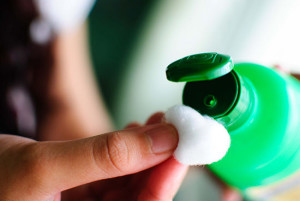 Astringents are a class of materials which are identified by their local effect on skin when applied topically. These effects may include all or some of the following (not all astringents are equally effective): the erection of hairs, the tightening of skin, or at least the sensation of tightening, the temporary reduction of pore size, antiperspirancy, the mitigation of “oily skin”, the rapid coagulation of blood from a flesh wound, skin healing, the promotion of tissue growth and other, more subjective sensations such as a refreshing or invigorating feeling. Astringents are an important addition to making your own skin care products.
Astringents are a class of materials which are identified by their local effect on skin when applied topically. These effects may include all or some of the following (not all astringents are equally effective): the erection of hairs, the tightening of skin, or at least the sensation of tightening, the temporary reduction of pore size, antiperspirancy, the mitigation of “oily skin”, the rapid coagulation of blood from a flesh wound, skin healing, the promotion of tissue growth and other, more subjective sensations such as a refreshing or invigorating feeling. Astringents are an important addition to making your own skin care products.
While these beneficial properties ensure that astringents are regarded as important and valuable cosmetic materials, not all the claims made for them can be substantiated by experiment.
The article below provides an overview into the basic formulary for making facial astringents and skin tonics. With the AustraLab program, you don’t need to understand the chemistry of making skin care products. I’ve done all the hard work for you – the formulations have already been tested for efficacy and ease of manufacturing.
Discover how to start your own business making skin care and makeup.
Types of astringent
Metal salt astringents
The astringent effects of many metal ions have long been known. The list of active metals includes iron, chromium, aluminium, zinc, lead, mercury, tin, copper, silver and zirconium, although they vary in their degree of astringency. Of these, only useful are the salts of zinc, aluminium and zirconium.
The effect of the anion in metal salt astringents is not entirely passive. It can be shown, for example, that the astringency of a metal ion is partially dependent upon the identity of the anion. Furthermore, the anion will also help to determine the solubility of the salt in various cosmetic media.
Organic acids
Low-molecular-weight organic acids with an ionisable proton show astringent properties. Most commonly encountered are lactic and citric acids.
Alcohols
Both ethanol and (less frequently) isopropanol are used as astringents, usually as aqueous solutions of strength up to 60 % w/v. Solutions of ethanol greater in strength than 20% may cause stinging when first applied, although this may be regarded as beneficial in certain types of product.
Auxiliary Additives
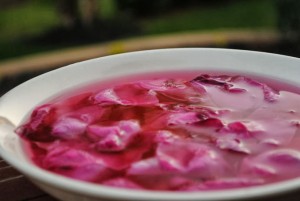 The materials added to the astringent preparations to assist or enhance their effect are referred to as auxiliary attitudes.
The materials added to the astringent preparations to assist or enhance their effect are referred to as auxiliary attitudes.
Methanol included to produce a cooling effect in an after-shave, an antibacterial in a styptic stick, and rose water as a refreshing adjunct to a skin toner are various agents added to tonics to promote soothing and healing of damaged skin.
Astringent products
Many products contain raw materials with astringent properties. It is possible to categorize these various products according to the particular astringent feature which they utilize. Antiperspirants, for example, exploit the property which some zinc, aluminium and zirconium compounds have of causing “anhidrosis” (decrease in activity of the sweat glands).
Astringent lotions may be subdivided into a number of related products. These include pre-shave and after-shave lotions, skin topics, toners, colognes and fresheners.
Astringent emulsions include antiperspirant creams as well as plain astringent creams and milks together with emulsion colognes and after-shaves.
Stick astringents are generally formed from sodium stearate – alcohol gels. Among the products presented in this form are antiperspirants, deodorants, colognes, after-shaves and styptic pencils. Some astringents are made in gel form, including some cleansing products and face masks.
Aqueous and aqueous-alcoholic lotions
Skin Toners
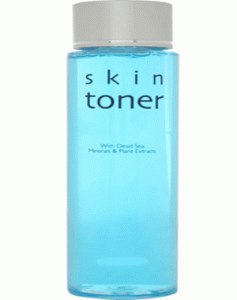 Toners have become an accepted part of the facial skin treatment regime. They are normally recommended for use after cleansing and before the application of a moisturizing cream. The primary purpose of such a product is to tighten the skin, reduce the pore size and reduce any tendency of areas of the face and neck to oiliness.
Toners have become an accepted part of the facial skin treatment regime. They are normally recommended for use after cleansing and before the application of a moisturizing cream. The primary purpose of such a product is to tighten the skin, reduce the pore size and reduce any tendency of areas of the face and neck to oiliness.
In some product ranges, toners are offered in a series of increasingly alcoholic strength for dry, normal and oily skins. There is a variety of water-soluble or alcohol-soluble emollients that can be used to offset the drying effect of ethanol. These include and ethoxylated lanolin derivatives, and propylene glycol.
Skin Tonics
 Skin tonics can be made by the addition of auxiliary attitudes and perhaps menthol or camphor to produce a slightly “medicated” fragrance. Possibly the most commonly used skin healing and soothing additive is allantoin, a chemical of the purine group. Allantoin has been shown to have regenerative, healing, softening, soothing and keratolytic properties. More recently, two allantion combination compounds, chlorodydroxy aluminium allantoinate and dihydroxy allantoinate have become available. These possess mild astringent qualities in addition to the healing and soothing properties of allantoin itself and their use has been specifically recommended in astringent lotions of the “tonic” type.
Skin tonics can be made by the addition of auxiliary attitudes and perhaps menthol or camphor to produce a slightly “medicated” fragrance. Possibly the most commonly used skin healing and soothing additive is allantoin, a chemical of the purine group. Allantoin has been shown to have regenerative, healing, softening, soothing and keratolytic properties. More recently, two allantion combination compounds, chlorodydroxy aluminium allantoinate and dihydroxy allantoinate have become available. These possess mild astringent qualities in addition to the healing and soothing properties of allantoin itself and their use has been specifically recommended in astringent lotions of the “tonic” type.
Azulene and its derivatives, particularly guaiazulene, have long been accredited with healing and soothing properties. Newer soothing ingredients to become available include a cationic cellulose polymer. No doubt of that skin-substantive cationic polymers will be found to have similar desirable properties.
The various benefits to be derived from the use of such additives make them logical ingredients of pre-shave and aftershave products. Pre-shave lotions – especially those designed to be used before electric shaving – make use of the ability of astringents to make facial hairs stand erect. After-shave lotions may be designed to soothe and cool the skin. Also to tighten it, to close the pores, to sterilize and stem the flow of blood from any inadvertent nicks or cuts.
The normal pH of skin is slightly acid; lotions and shaving preparations often make use of assets to “restore” this acidic condition as well as for reasons of the astringency.
Astringent emulsions
Astringent creams or lotions of the emulsion variety serve many purposes in the cosmetic field. Especially as antiperspirants, shaving products and perfumed creams.

Subscribe Now – Receive the lastest news & updates from AustraLab
You might also like ...

Cosmetic Chemistry – How To Make Makeup & Skin Care
Start Your Own EmpireManufacturing Cosmetics, Makeup, HairCare,Sanitizers & Detergents Cosmetic Chemistry … How to Start your Own Business Click here to learn the trade secrets

Cosmetics Business – Make Your Own Makeup, Start An Empire
Start Your Own EmpireManufacturing Cosmetics, Makeup, HairCare,Sanitizers & Detergents Start Your Own Cosmetics Business … Start an Empire Click here to learn the trade secrets

Make Mineral Makeup – Million Dollar Makeup
Start Your Own EmpireManufacturing Cosmetics, Makeup, HairCare,Sanitizers & Detergents Making Mineral Makeup … Start your Own Cosmetics Business Click here to learn the trade secrets

The Great Cosmetics Conspiracy – Part 2
Start Your Own EmpireManufacturing Cosmetics, Makeup, HairCare,Sanitizers & Detergents The Great Cosmetics Conspiracy – Part 2 … Start your Own Business Click here to learn
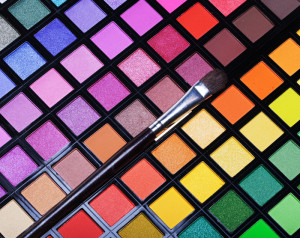
Make Eye Makeup
Start Your Own EmpireManufacturing Cosmetics, Makeup, HairCare,Sanitizers & Detergents How to Make Eye Makeup … Start your Own Business Click here to learn the trade
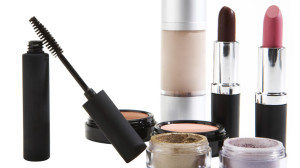
How To Make Makeup – 5 Questions
Start Your Own EmpireManufacturing Cosmetics, Makeup, HairCare,Sanitizers & Detergents How to Make Makeup … Start your Own Business Click here to learn the trade secrets

The Great Cosmetics Conspiracy
Start Your Own EmpireManufacturing Cosmetics, Makeup, HairCare,Sanitizers & Detergents The Great Cosmetics Conspiracy – Part 1 … Start your Own Business Click here to learn

Cosmetic Ingredients – How One Essential Oil Created a Billion Dollar Empire
Start Your Own EmpireManufacturing Cosmetics, Makeup, HairCare,Sanitizers & Detergents Cosmetic Ingredients … How One Essential Oil Created a Billion Dollar Empire … Start your Own

Private Label Cosmetics – Why you need your Own Brand
Start Your Own EmpireManufacturing Cosmetics, Makeup, HairCare,Sanitizers & Detergents Private Label Cosmetics – Why You Need Your Own Brand … Start your Own Business Click

Cosmetics Manufacturing – Start Your Own Business – Think Outside The Square
Start Your Own EmpireManufacturing Cosmetics, Makeup, HairCare,Sanitizers & Detergents Cosmetics Manufacturing … Start your Own Business Click here to learn the trade secrets of manufacturing

© 2020 AustraLab